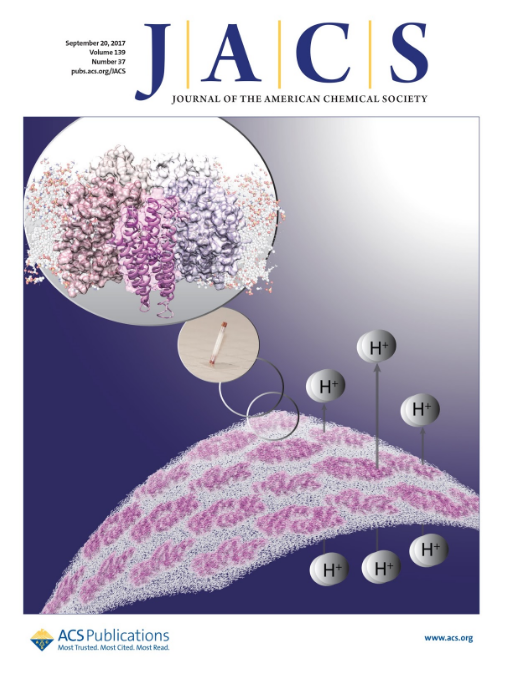Putting the Proton Back in Membrane Protein NMR

Membrane proteins are notoriously difficult to analyze structurally, due to their large sizes and integration into lipid bilayers. Solid-state nuclear magnetic resonance (NMR) spectroscopy has provided structural insights into membrane proteins; however, these experiments have largely been performed on perdeuterated protein samples to combat line broadening caused by proton coupling, which reduces spectral resolution. This approach is not ideal because it requires a higher concentration of perdeuterated protein samples.
Now, Bradley Chmelka, Guido Pintacuda, and colleagues crank up the speed of magic-angle spinning to overcome the proton coupling issue, sharpening lines. Using only 0.5 mg of sample, the researchers successfully assign many proton resonances in a fully protonated heptahelical transmembrane protein, proteorhodopsin, in native-like lipid bilayers. They also identify dipolar interactions between protons, which can provide distance constraints and interatomic distances between hydrogens, among other structural insights. This study may represent the first report of long-range contacts between side-chain protons in a fully protonated membrane protein.
The very fast (100 kHz) magic-angle spinning approach is generally applicable and may facilitate the high-resolution study of additional membrane proteins, including those that are difficult to produce in large quantities.
Erika Gebel Berg (Ph.D.)
Journal of the American Chemical Society
